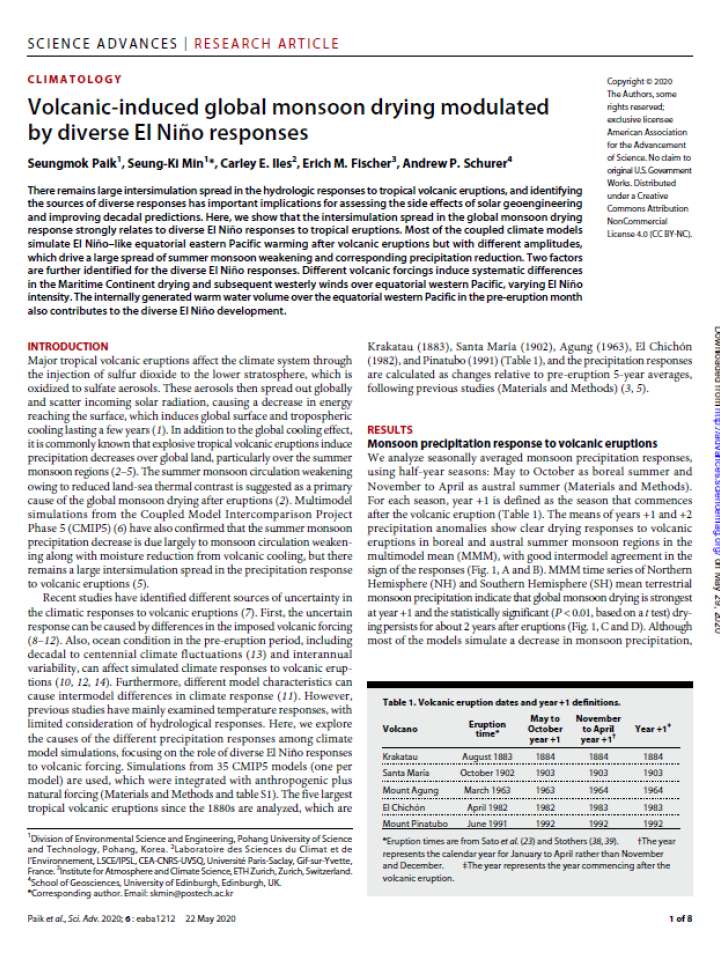Volcanic-induced global monsoon drying modulated by diverse El Niño responses
In this study, the authors compared several climate model simulations and found that El Niño appeared in the year following a volcanic eruption in most models, with a significant drop in precipitation around the global monsoon region. In particular, the strength of El Niño was different for each simulation, and the stronger the El Niño, the more pronounced the reduction in precipitation occurred. The research team also found that the stronger the volcanic forcing and the greater the warm water volume in the western Pacific Ocean, a stronger El Niño developed, which in turn intensified the reduction in precipitation.
These findings are expected to be used to identify the side effects of geoengineering techniques and to predict the climate of the later years. In particular, it suggests that if geoengineering techniques are used to reduce global warming by spraying sulfur dioxide - the main component of volcanic ash - in the lower stratosphere to imitate artificial volcanoes, they could provide unexpected side effect of changing the precipitation patterns across the globe.
Explore further
